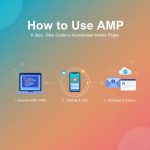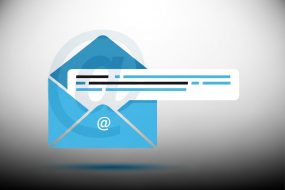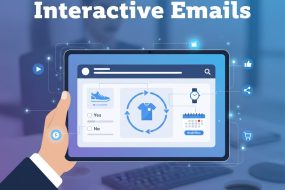
If you’re running a Shopify store, you’ve probably wondered whether the platform includes built-in email marketing features. The short answer is yes, but there’s more to the story than a simple yes or no.
Shopify does offer email marketing capabilities through Shopify Email, its native email marketing tool. However, understanding what’s included, what it costs, and how it compares to other options will help you make the best decision for your business. This guide covers everything you need to know about Shopify’s email marketing features and alternatives.
What Is Shopify Email?

Shopify Email is the platform’s built-in email marketing solution that launched in 2020. This tool allows store owners to create, send, and track email campaigns directly from their Shopify admin dashboard.
The service integrates seamlessly with your store data, automatically pulling in product information, customer details, and purchase history. This tight integration means you can create targeted campaigns without manually importing data or switching between platforms.
Shopify Email comes with professionally designed templates optimized for different campaign types, including welcome emails, product announcements, and promotional campaigns. The templates are mobile-responsive and designed to match your brand’s look and feel.
Key Features of Shopify Email
Template Library and Customization
Shopify Email provides dozens of pre-built email templates that you can customize to match your brand. The drag-and-drop editor makes it easy to add your logo, change colors, and modify layouts without any coding knowledge.
Each template is designed with conversion in mind, featuring clear call-to-action buttons and product showcases that link directly to your store. You can also create templates from scratch if you prefer more control over the design.
Customer Segmentation
The platform automatically segments your customers based on their shopping behavior, location, and purchase history. You can target specific groups like first-time buyers, repeat customers, or people who haven’t purchased in a while.
This segmentation capability helps improve email relevance and engagement rates since you’re sending more targeted messages to specific audience groups.
Automated Email Workflows
While Shopify Email’s automation features are more basic compared to dedicated email marketing platforms, you can still set up essential automated campaigns like welcome series and abandoned cart emails.
These automated workflows help nurture customers and recover potentially lost sales without requiring manual intervention for every email sent.
Performance Analytics
Shopify Email provides basic analytics, including open rates, click-through rates, and revenue generated from each campaign. You can track which emails perform best and use this data to optimize future campaigns.
The analytics integrate with Shopify’s broader reporting tools, giving you a complete picture of how email marketing contributes to your overall sales performance.
Shopify Email Pricing
Shopify Email follows a freemium pricing model. You get 2,500 free emails per month, regardless of which Shopify plan you’re using. After you exceed this limit, you’ll pay $1 for every 1,000 additional emails sent.
This pricing structure makes Shopify Email particularly attractive for small businesses just starting with email marketing. However, as your email list grows, the costs can add up quickly compared to some third-party alternatives.
There are no setup fees or monthly subscriptions—you only pay for what you use beyond the free allowance.
Limitations of Shopify Email
Basic Automation Features
While Shopify Email covers the essentials, its automation capabilities are limited compared to dedicated email marketing platforms. You won’t find advanced features like complex multi-step workflows, behavioral triggers, or sophisticated lead scoring.
Limited A/B Testing
The A/B testing functionality is basic, allowing you to test subject lines but not email content, send times, or other variables that can significantly impact campaign performance.
Fewer Integrations
Since Shopify Email is designed primarily for Shopify stores, it lacks the extensive third-party integrations you’ll find with platforms like Mailchimp or Klaviyo.
Advanced Segmentation Constraints
While customer segmentation exists, the options are more limited than what you’d get with specialized email marketing tools that offer detailed behavioral tracking and predictive analytics.
Popular Shopify Email Marketing Alternatives
Klaviyo
Klaviyo is one of the most popular email marketing platforms among Shopify merchants. It offers advanced segmentation, sophisticated automation workflows, and detailed analytics. The platform excels at creating highly personalized campaigns based on customer behavior and purchase history.
Pricing starts at $20 per month for up to 500 contacts, making it more expensive than Shopify Email but offering significantly more features.
Mailchimp
Mailchimp provides a user-friendly interface with robust automation features and extensive template options. It offers a free plan for up to 2,000 contacts and 10,000 emails per month, making it cost-effective for small businesses.
The Shopify integration is straightforward, though not as seamless as Shopify Email’s native integration.
Omnisend
Omnisend specializes in e-commerce email marketing with features like product recommendations, discount codes, and cart abandonment workflows. It offers both email and SMS marketing capabilities.
The platform starts at $16 per month and includes advanced segmentation and automation features that surpass Shopify Email’s capabilities.
Should You Use Shopify Email or a Third-Party Alternative?
Choose Shopify Email If:
You’re just starting with email marketing and want a simple, cost-effective solution. The native integration makes it easy to get started without learning a new platform or managing additional subscriptions.
Shopify Email works well for basic promotional campaigns, product announcements, and simple automation sequences. If your email marketing needs are straightforward, the built-in solution might be all you need.
Consider Third-Party Alternatives If:
Your business relies heavily on email marketing for revenue generation. Advanced features like sophisticated automation, detailed segmentation, and comprehensive analytics can significantly impact your bottom line.
You want to scale your email marketing efforts with features like advanced A/B testing, predictive analytics, or multi-channel marketing campaigns that include SMS and social media.
You need integrations with other marketing tools, CRM systems, or analytics platforms that aren’t available through Shopify Email.
Getting Started with Shopify Email Marketing

Setting Up Shopify Email
Access Shopify Email through your admin dashboard under the “Marketing” section. The setup process is straightforward—you’ll verify your sending domain and customize your email preferences.
Import your existing customer list or start building one through your store’s opt-in forms and checkout process. Make sure to comply with email marketing regulations like CAN-SPAM and GDPR.
Best Practices for Success
Segment your email list from the beginning, even if you start with basic categories like new customers versus repeat buyers. This foundation will help you send more relevant emails as your list grows.
Focus on providing value in every email, whether that’s exclusive discounts, helpful content, or early access to new products. Avoid overwhelming subscribers with too many promotional emails.
Test different subject lines, send times, and email content to understand what resonates with your audience. Even basic A/B testing can significantly improve your results over time.
Making the Right Choice for Your Store
Shopify Email provides a solid foundation for e-commerce email marketing, especially for businesses just getting started or those with basic needs. The native integration, competitive pricing, and ease of use make it an attractive option for many store owners.
However, as your business grows and email marketing becomes more critical to your success, you may find the limitations restrictive. Advanced features available through third-party platforms can drive significantly better results for businesses ready to invest more in their email marketing efforts.
Consider starting with Shopify Email to learn the basics and understand your email marketing needs. You can always migrate to a more advanced platform later as your requirements evolve. The key is choosing a solution that matches your current needs while providing room to grow.


















No Comments